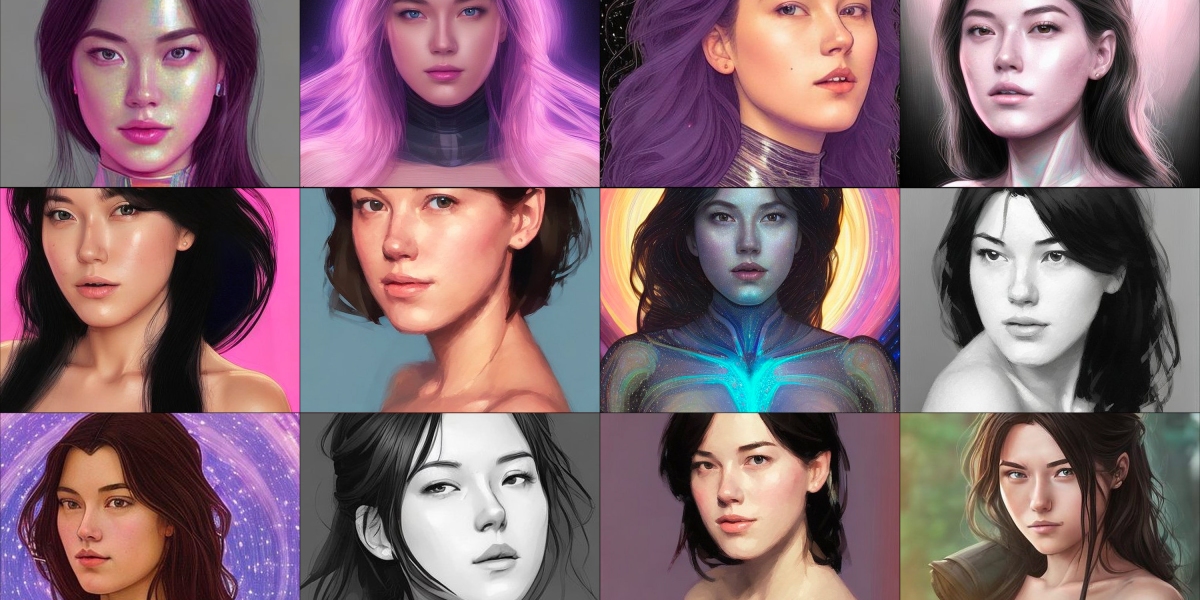But while Lensa generated realistic yet flattering avatars for them—think astronauts, fierce warriors, and cool cover photos for electronic music albums— I got tons of nudes. Out of 100 avatars I generated, 16 were topless, and in another 14 it had put me in extremely skimpy clothes and overtly sexualized poses.
I have Asian heritage, and that seems to be the only thing the AI model picked up on from my selfies. I got images of generic Asian women clearly modeled on anime or video-game characters. Or most likely porn, considering the sizable chunk of my avatars that were nude or showed a lot of skin. A couple of my avatars appeared to be crying. My white female colleague got significantly fewer sexualized images, with only a couple of nudes and hints of cleavage. Another colleague with Chinese heritage got results similar to mine: reams and reams of pornified avatars.
[clip]
Lensa generates its avatars using Stable Diffusion, an open-source AI model that generates images based on text prompts. Stable Diffusion is built using LAION-5B, a massive open-source data set that has been compiled by scraping images off the internet.
And because the internet is overflowing with images of naked or barely dressed women, and pictures reflecting sexist, racist stereotypes, the data set is also skewed toward these kinds of images.
This leads to AI models that sexualize women regardless of whether they want to be depicted that way, Caliskan says—especially women with identities that have been historically disadvantaged.
AI training data is filled with racist stereotypes, pornography, and explicit images of rape, researchers Abeba Birhane, Vinay Uday Prabhu, and Emmanuel Kahembwe found after analyzing a data set similar to the one used to build Stable Diffusion. It’s notable that their findings were only possible because the LAION data set is open source. Most other popular image-making AIs, such as Google’s Imagen and OpenAI’s DALL-E, are not open but are built in a similar way, using similar sorts of training data, which suggests that this is a sector-wide problem.

 www.technologyreview.com
www.technologyreview.com
I wonder what data set was used to teach the AI that included so much Asian Porn
I have Asian heritage, and that seems to be the only thing the AI model picked up on from my selfies. I got images of generic Asian women clearly modeled on anime or video-game characters. Or most likely porn, considering the sizable chunk of my avatars that were nude or showed a lot of skin. A couple of my avatars appeared to be crying. My white female colleague got significantly fewer sexualized images, with only a couple of nudes and hints of cleavage. Another colleague with Chinese heritage got results similar to mine: reams and reams of pornified avatars.
[clip]
Lensa generates its avatars using Stable Diffusion, an open-source AI model that generates images based on text prompts. Stable Diffusion is built using LAION-5B, a massive open-source data set that has been compiled by scraping images off the internet.
And because the internet is overflowing with images of naked or barely dressed women, and pictures reflecting sexist, racist stereotypes, the data set is also skewed toward these kinds of images.
This leads to AI models that sexualize women regardless of whether they want to be depicted that way, Caliskan says—especially women with identities that have been historically disadvantaged.
AI training data is filled with racist stereotypes, pornography, and explicit images of rape, researchers Abeba Birhane, Vinay Uday Prabhu, and Emmanuel Kahembwe found after analyzing a data set similar to the one used to build Stable Diffusion. It’s notable that their findings were only possible because the LAION data set is open source. Most other popular image-making AIs, such as Google’s Imagen and OpenAI’s DALL-E, are not open but are built in a similar way, using similar sorts of training data, which suggests that this is a sector-wide problem.

The viral AI avatar app Lensa undressed me—without my consent
My avatars were cartoonishly pornified, while my male colleagues got to be astronauts, explorers, and inventors.
